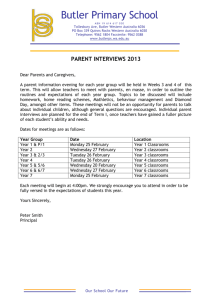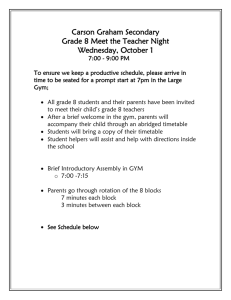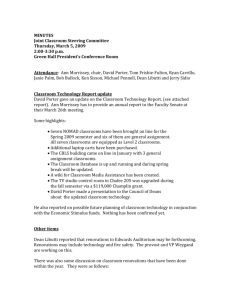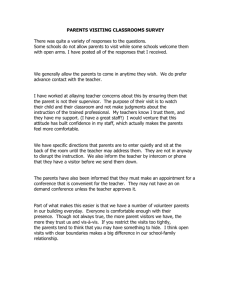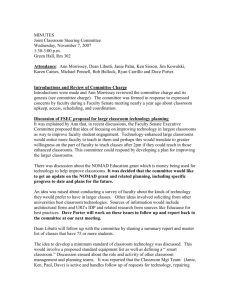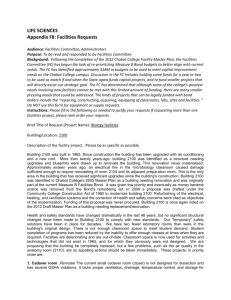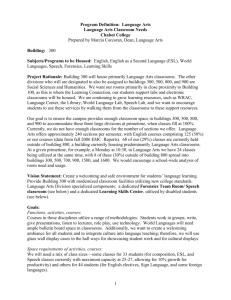October 9, 2009 Minutes
advertisement
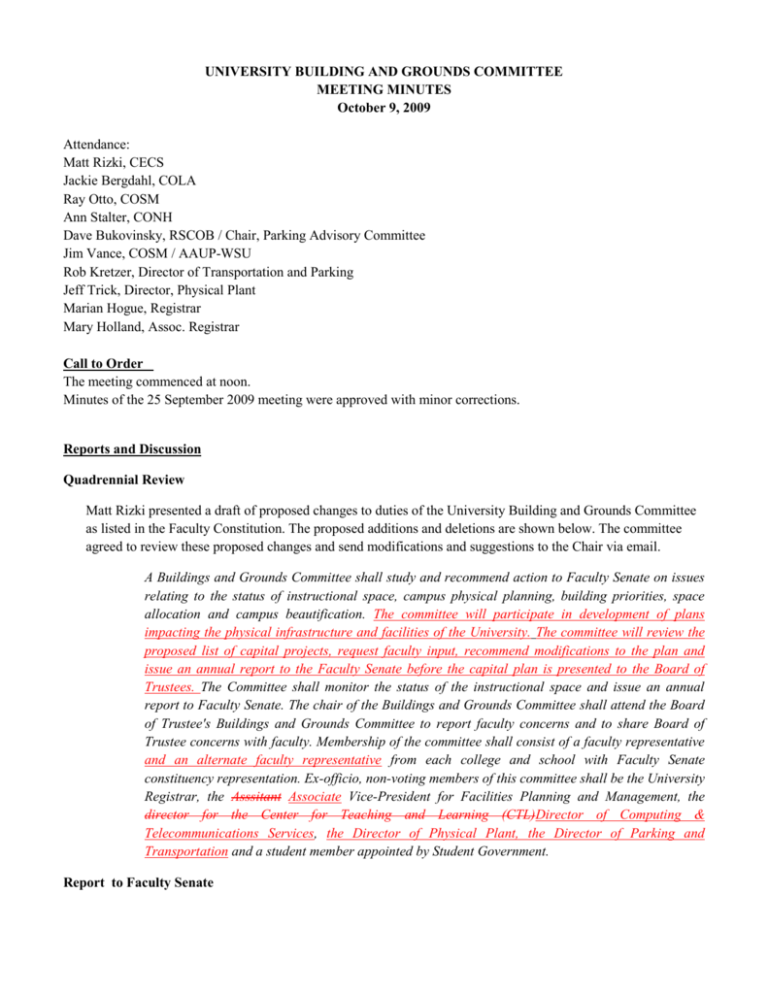
UNIVERSITY BUILDING AND GROUNDS COMMITTEE MEETING MINUTES October 9, 2009 Attendance: Matt Rizki, CECS Jackie Bergdahl, COLA Ray Otto, COSM Ann Stalter, CONH Dave Bukovinsky, RSCOB / Chair, Parking Advisory Committee Jim Vance, COSM / AAUP-WSU Rob Kretzer, Director of Transportation and Parking Jeff Trick, Director, Physical Plant Marian Hogue, Registrar Mary Holland, Assoc. Registrar Call to Order The meeting commenced at noon. Minutes of the 25 September 2009 meeting were approved with minor corrections. Reports and Discussion Quadrennial Review Matt Rizki presented a draft of proposed changes to duties of the University Building and Grounds Committee as listed in the Faculty Constitution. The proposed additions and deletions are shown below. The committee agreed to review these proposed changes and send modifications and suggestions to the Chair via email. A Buildings and Grounds Committee shall study and recommend action to Faculty Senate on issues relating to the status of instructional space, campus physical planning, building priorities, space allocation and campus beautification. The committee will participate in development of plans impacting the physical infrastructure and facilities of the University. The committee will review the proposed list of capital projects, request faculty input, recommend modifications to the plan and issue an annual report to the Faculty Senate before the capital plan is presented to the Board of Trustees. The Committee shall monitor the status of the instructional space and issue an annual report to Faculty Senate. The chair of the Buildings and Grounds Committee shall attend the Board of Trustee's Buildings and Grounds Committee to report faculty concerns and to share Board of Trustee concerns with faculty. Membership of the committee shall consist of a faculty representative and an alternate faculty representative from each college and school with Faculty Senate constituency representation. Ex-officio, non-voting members of this committee shall be the University Registrar, the Asssitant Associate Vice-President for Facilities Planning and Management, the director for the Center for Teaching and Learning (CTL)Director of Computing & Telecommunications Services, the Director of Physical Plant, the Director of Parking and Transportation and a student member appointed by Student Government. Report to Faculty Senate Matt Rizki reported that at the October 5, 2009 Faculty Senate Meeting he presented the UBGC recommendation regarding the capital plan. Specifically the UBGC recommended that the Administration modify the 2013-2014 Biennium budget by removing the line item titled: Auditorium Construction and replacing it with a line item titled: Classroom Building. In addition, Matt Rizki reported the UBGC recommended that the Physical Plant continue replacing old light fixtures with new energy efficient fixtures in classrooms. The UBGC also recommended that continuously dimmable light fixture were not necessary in classrooms. The UBGC noted that faculty need lighting that can be lowered in discrete levels to facilitate the use of projection equipment. CFP Classroom Report The UBGC reviewed the final report from CFP on classroom utilization and scheduling at Wright State University. Overall the report suggests that Wright State has sufficient classrooms to fulfill expected demand if certain adjustments are made in policies and scheduling. A number of concerns were raise by various members of the committee related to the choice of data used in the study, the way the data was analyzed and the final recommendations presented by CFP. Specific areas of concerns are listed below. The study uses three categories of classrooms referred to as Tier 1, 2 and 3. Tier 1 classrooms are rooms controlled by the Registrar, Tier 2 includes rooms controlled by colleges and departments and Tier 3 consists of rooms that are of limited use because of their physical location or other problems. The committee believes that the study should have been restricted to Tier 1 rooms. Department and college controlled rooms are used for a variety of special purposes including seminars, thesis defenses, faculty meetings, research meeting etc. If these rooms are scheduled as regular classrooms, the quality of the academic programs will suffer. The Tier 3 classrooms such as those in the Nutter Center and the dorms (Honors and Hamilton) are too far away to be used for general classes and are not readily accessible to students with disabilities. The committee also noted that there is a potential problem with the use of the 14 day enrollment data. Ann Stalter noted that some nursing classes may not even appear in the 14 day data because they may not require space on campus during this time period. The committee noted that a number of programs in nursing and education may have time periods when they need space on campus that are outside this measurement window. If this is correct, the CFP report may be underestimating the demand for classroom space. The CFP report suggests that the university could benefit from placing small classes in the small classrooms (size < 20). Several members of the committee noted that this is not realistic. Many of the smaller classrooms do not have electronic equipment or lack board space. Jim Vance explained that a graduate level math class would readily to fit in a small classroom, but the lack of board space would make the room unsuitable for most math faculty members. To summarize the UBGC believes that the CFP report suffers from a number of flaws. The report fails to account for room ownership and therefore includes rooms that should not be part of the analysis. Department controlled room do not belong in the study. Consequently the 141 classrooms listed in the report is not a realistic figure. The report fails to include room features in the analysis. By assuming the only difference between rooms is their size, the report overestimates the flexibility available for scheduling the rooms. The report assumes perfect knowledge. Room scheduling must be done based on predictions of enrollment so there will always be cases where expected enrollments do not materialize. The report suggests that spreading classes throughout the day would improve the utilization of the classroom space. There is no evidence that Wright State students will attend classes whenever the university chooses to schedule them. In fact, the average WSU student is quite different (average age, outside employment, family commitments etc) than the average student at other residential university. The report fails to provide a realistic plan that can be used moving forward. This is really not the fault of CFP, but rather a limitation imposed by the lack of data related to the changes that will occur as a result of the move to semesters. The UBGC recommends developing standards for categorizing classrooms. These standards can then be used to match faculty instructional needs and preferences to specific room features. This will allow us to make a more realistic estimate of the type and number of classrooms we need moving forward. Adjourn Future Meetings 2:00 PM - 4:00 PM, October 23, 2009 in 499 Joshi
